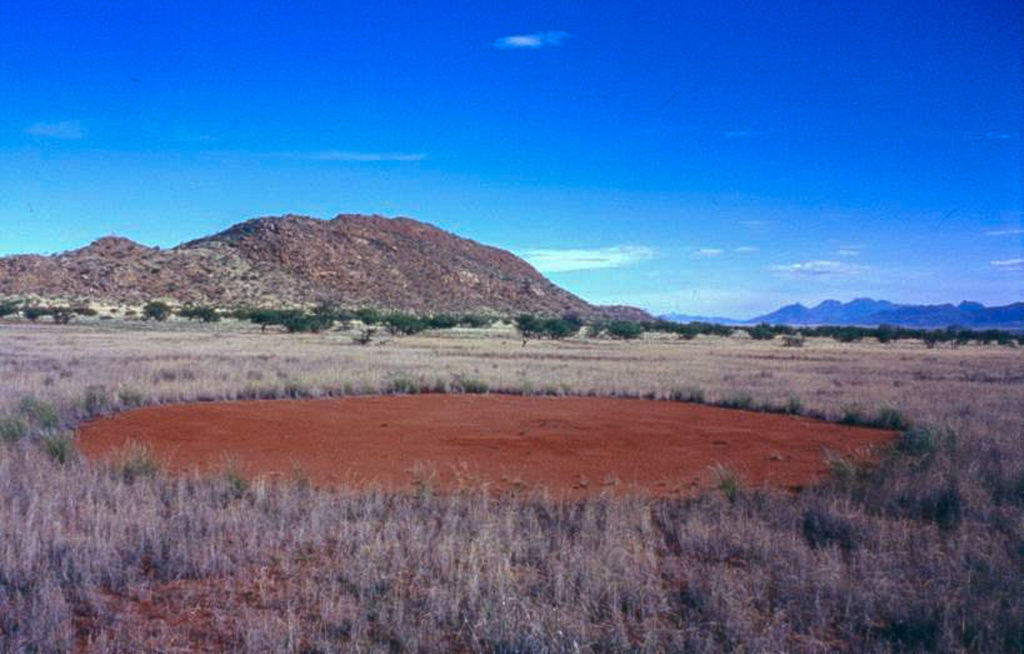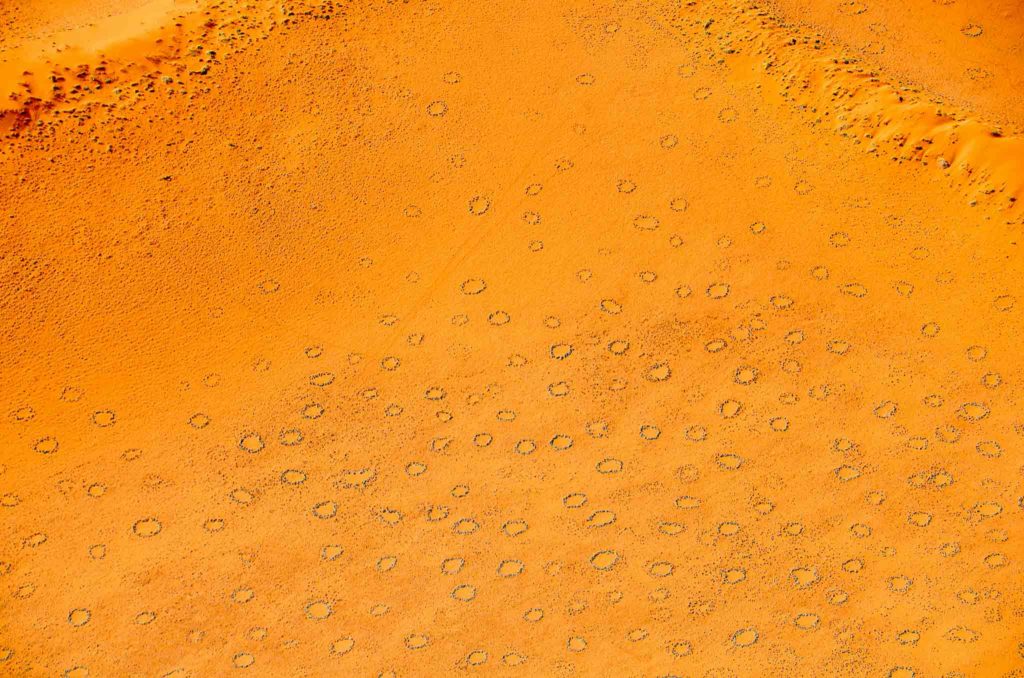It may be one of the most extraordinary natural phenomena of Namibia: the circular Fairy Circles in the Namib. Myths of the Himba state that the grass circles are the works of Gods and Spirits. Other stories tell that they were formed by a dragon. Just like these tall stories, scientists haven’t figured it out either, even after years of research. Explore Africa informs you about the theories.
Dragons, ghosts or gods?
In the dry grassland of the Nambib desert you can find hundreds of fairy circles. This natural phenomenon has created bare circles among the desert grass. The circles have diameters varying from one foot up to more than 40 feet. Stories of the Namibian Himba-tribe, who graze their cattle between the circles, tell that they are footsteps of the gods. Other Himba believe that spirits of the dead created the circles. Tour guides visiting the fairy circles also have a story about a dragon living underground. By blowing fire against the base of the soil, this dragon creates the circles we can see on the surface.
The origin of these circles has long been a riddle for scientists, with a lot of theories and little proof. Recent breakthroughs by different scientists are diametrically opposed. The academic world is strongly divided.

Termites
The German researcher Norbert Jürgens spent no less than six years of his life, and 40 visits, researching the origin of the grass circles. He concluded: sand termites are causing the mystery. Prior to his research Jürgens claimed: ‘If an organism is responsible for the circles, then it must be an organism that is a sole occupant in the fairy circles.’ The Psammotermes allocerus lives in the soil of every circle investigated. By creating these bare circles, the termites generate their own rainwater stock to survive on.
In 2017, by means of research on termite patterns, this theory was strengthened. Sand termite colonies at other locations in the world fight internally. Larger colonies devour the smaller ones until two equally large colonies face each other and a boundary is created. From the top, these boundaries of the areas look hex diagonal. The scientists make hypothetical models on a computer of what these boundaries would look like in Namibia. In reality, similar models turned out to largely correspond with the distances and sizes of the circles in Namibia.
Scarce precipitation
The greatest challenger of Jürgen’s theory is Stephan Getzin, another German researcher. Getzin believes that plants create the iconic circles themselves. This has to do with the low amount of rainfall in the desert. Getzin’s theory: as the crop grows in a circle, it creates its own mini-oasis. This way the plants capture the rain and also make optimal use of the scarce water.

When, a few years ago, fairy circles were also discovered in Australia, Getzin was quick to refute Jürgen’s termite-theory. By carrying out soil research on termite activity, Getzin’s team found out that although termites are present in the Australia circles, not all circles show termites or termite activity.
A combination
Over the last few years, also suspicion has risen that the origin of the circles isn’t necessarily related to one single theory, but a combination of both. The termites remove the vegetation to capture more moist. The plant surrounding them benefit from this in turn, because there is more water left for them. This would explain why the vegetation on the edge of the circles is higher. The fact that many circles are closely together would relate to termite colonies living together and competing.


Recent Comments